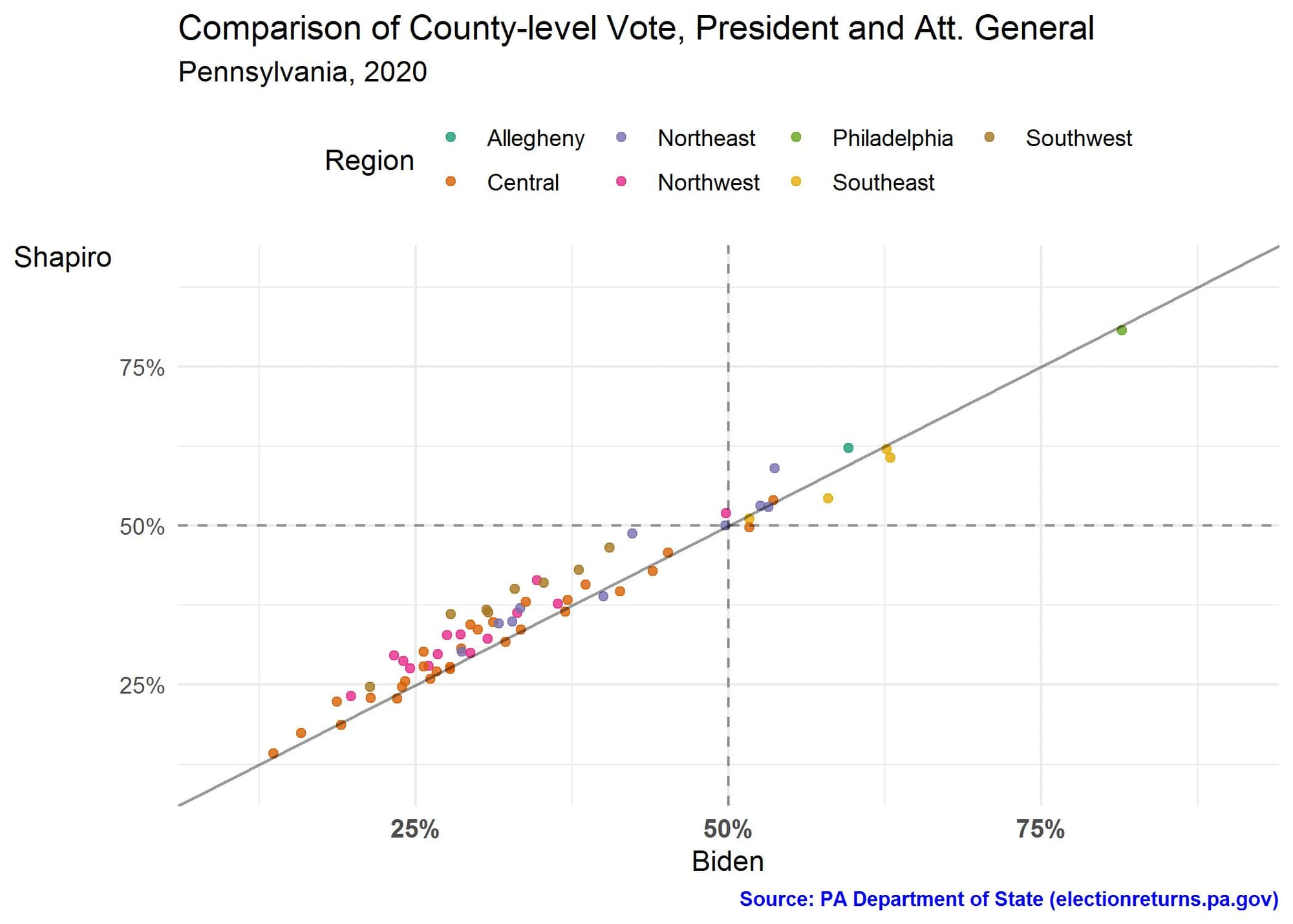Shapiro as Vice President?
Can the Pennsylvania governor help Kamala Harris win the presidency? We discuss why he's so popular and how his candidacy might resonate with U.S. voters.
Dear Subscribers,
Vice President Kamala Harris’s search for a running mate has some people arguing that Governor Shapiro would be a good choice. This month’s newsletter provides some thoughts about what he might bring to the ticket.
Thank you for reading,
Berwood Yost
There’s one question dominating politics today: who will Kamala Harris choose as her running mate? Governor Shapiro’s appearance on her short list has set off an avalanche of questions about what he brings to the ticket, his potential deficiencies, and whether he can help Democrats carry Pennsylvania, the state that many believe Democrats need to keep them in the White House.
Shapiro demonstrated his political skill by clearing the primary field for governor in 2022, and then demonstrated his strong campaign skills by easily beating Republican Doug Mastriano. His initial job approval ratings were good, but they rose rapidly with his handling of the collapse of a highway overpass near Philadelphia in the summer of 2023. Shapiro has maintained those good feelings, and his job approval ratings (54% positive) make him the state’s highest performing first-term governor since Tom Ridge in the mid-1990s. He is undoubtedly the most popular politician in Pennsylvania.
But what many people have overlooked by pointing to Shapiro’s overwhelming electoral success in 2022 and his positive job approval ratings today is that he also demonstrated his political and campaign skills when he ran for re-election as the state’s attorney general in 2020, a campaign where he shared the ballot with Joe Biden. In the 2020 race, Josh Shapiro won more votes than Joe Biden, even though fewer people voted in the attorney general race than the presidential race. In fact, Shapiro was the only Democratic state row office candidate to win in the 2020 election. Comparing Shapiro’s share of the vote to Biden’s vote share at the county level (see Figure 1) provides compelling evidence about what he brings to the race: he garnered more support among voters outside of the traditional Democratic strongholds in the southeast and Allegheny County than Biden.

Biden won 13 of the state’s counties in 2020 and Shapiro won 14. He carried Luzerne County by a thin margin, but he performed about 14 points better than Biden did there. Luzerne County, you may recall, was the center of the political universe for explaining Trump’s success after 2016 and provides the exemplar for a white, working-class county that has soured on Democrats.
I suspect that Shapiro appeals to the state’s voters outside of traditional Democratic communities because they see him as more moderate than progressive and more pragmatic than ideological. His first action as governor was to make more state jobs available to those without a college diploma. He has negotiated two budgets with a divided state legislature with minimal partisan rancor, taken positions supporting school vouchers and fracking that concern some activist Democrats, and has championed an economic development strategy to make the state more competitive with other states, including continuing reductions in the corporate net income tax.
The political science literature suggests that the vice presidential choice rarely affects the outcome of an election, and I tend to agree with my friend Kyle Kopko’s analysis of the limited electoral benefits of home-state candidates. But, then again, it has been a long time since Pennsylvania has had a home-state candidate to vote for. The state’s primary elections show how much Pennsylvania voters like to support local candidates, and if you’ve ever met one of us, you probably know how important a sense of place is to our residents. It would be fascinating to see if that behavior carries over to a presidential race.
Franklin & Marshall College Poll Newsletter
Join the newsletter to receive the latest updates in your inbox.
